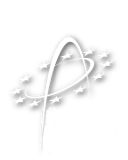Astronet aims at encouraging a common science vision for all of European astronomy. One of its key goals is to deliver a strategic plan and an infrastructure roadmap.
The network first started in 2005 as a consortium of European funding agencies and research organisations. Astronet was an ERA-NET up to 2015, in the context of Horizon 2020 and with the support of the European Commission. It is now a self-sustained group of funding agencies and associated bodies.
Astronet covers the whole astronomical domain. Objects of interest go from the Sun and the Solar System to the limits of the observable Universe. The spectral studies range from radioastronomy to gamma-rays and particles. The network covers the ground as well as space observations. It includes also theory, laboratory astrophysics and computing. Finally, the consortium is dedicated to outreach, training and recruitment of the vital human resources and to ensuring the sustainability of Astronomical research.

ASTRONET-1: Networking and preparing decisions on major infrastructures
At the outset, the Astronet partners faced a bewildering array of proposals for constructing major infrastructures at all wavelengths and particles. They agreed that comprehensive, science-based, coordinated planning was the most cost-effective basis on which to address this challenge. Both in the construction and operational phases. Establishing such a comprehensive plan across diverse scientific disciplines and communities was a challenge. After extensive community consultation, ASTRONET-1 reached that key goal with the publication of its Science Vision and Infrastructure Roadmap reports in November 2007 and 2008. A number of concomitant surveys and topical strategy plans were also prepared. The value of close contact between European astronomy and its funders was proven at the same time. These were very significant new steps towards the coordination of all European resources in the field.
The network has made a permanent impact on European astronomy, especially with the Science Vision and Infrastructure Roadmap as the basis for the coordination. It has proven a successful combination of bottom-up and top-down approach. Interaction with all key stakeholders is recognized as a model of coordination. What the community now expects is implementation of the Roadmap recommendations. This implies long-term commitment to action at different levels. Also a flexible, tailor-made, pragmatic approach–which is the spirit of Astronet.
ASTRONET-2: Implementing the roadmap and preparing the future
Building on these initial achievements, ASTRONET-2 has addressed implementing the Roadmap. The Science Vision and Infrastructure Roadmap was developed in concert with ESO and ESA’s own long-term plans.
Astronet main recommendations were followed by decision makers. The ESO Council has launched the European Extremely Large Telescope (E-ELT) project. The next major ESA missions have been selected. The SKA and CTA projects are off to a firm start. Thus, the future main facilities for European astronomy have been approved as foreseen–the more remarkable since the economic downturn has put budgets, recurrent costs and staffing under stress in the same period.
